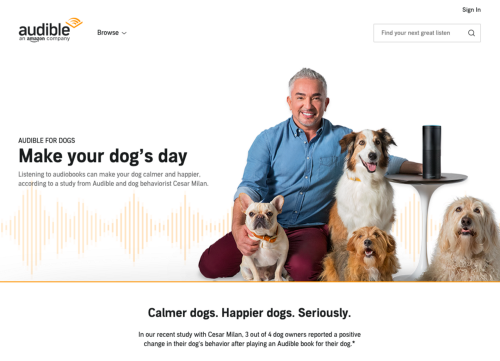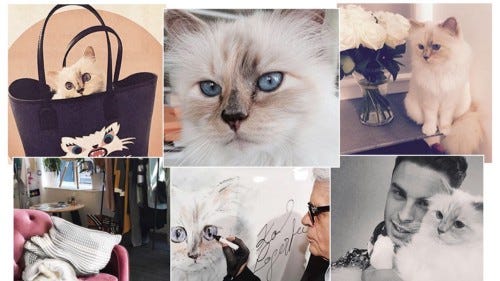
Dünyada evcil hayvan ürün ve hizmet sektörünün büyüklüğü 110 ila 150 milyar dolar arasında olduğu tahmin ediliyor. Türkiye bu konuda gelişmiş ülkelere nazaran biraz geriden gelse de arayı hızla kapatıyor gibi: Ülkemizde 2017 yılında yalnızca mama, oyuncak ve aksesuar satışından 1 milyar dolar’lık bir ciro elde edildi. Evcil Hayvancılık ve İşadamları Derneği’nin açıkladığı verilere bakılırsa, Türkiye’de evcil hayvan harcamaları yılda ortalama yüzde 15 civarında büyüyor [1]. Bu rakamın, ekonominin genel büyüme oranının kat kat üstünde olduğunu da not düşelim…

Türkiye’nin en büyük e-ticaret platformlarından olan N11’e göre, bir evcil hayvan için yapılan aylık harcama miktarı 500 lirayı buluyor [2]. Bu harcama miktarı, Türkiye İstatistik Kurumu’nun 2018 verilerine göre ülkemizde kişi başına düşen ortalama gelirin neredeyse dörtte birine denk düşüyor. Peki ortalama gelirimizin çeyreğini neden evcil hayvanlar için harcayabiliyoruz?
Bulunan en eski evcil köpek kalıntılarının 14.000 yıllık Paleolitik çağ mezarlarında insanlarının yanına gömülmüş olması, çok eskiye dayanan hayat arkadaşlığına işaret ediyor [3]. Ne var ki geçmişte evcil hayvanlarla paylaştığımız ilişki şu anki “kira ödemeyen ev arkadaşı” ilişkisinden çok uzaktı. Onlardan mutlaka fonksiyonel bir fayda bekliyor, en iyi durumda artıklarla besliyor, rahatlıklarını düşünmüyor, onlardan daha kolay vazgeçebiliyorduk [4].

Şu geldiğimiz noktada ise, arzu ederseniz (!) 10.000 TL’yi aşan fiyatıyla günümüzün en âlâ statü sembollerinden olan Moncler şişme montlardan kedinize veya köpeğinize satın alabiliyorsunuz…
Köpeğinizin doğum gününü de boş geçmeyeceksiniz diye düşünüyoruz.
O halde, Instagram’da birbiri ardına türeyen köpek pasta butiklerinden unsuz, şekersiz ve tamamen organik bir köpek pastası sipariş edebilirsiniz. Diğer tüylü misafirler için özel yapım ciğerli bisküvileri de unutmayalım!
Köpeğinizin doğum gününü de boş geçmeyeceksiniz diye düşünüyoruz.
O halde, Instagram’da birbiri ardına türeyen köpek pasta butiklerinden unsuz, şekersiz ve tamamen organik bir köpek pastası sipariş edebilirsiniz. Diğer tüylü misafirler için özel yapım ciğerli bisküvileri de unutmayalım!
Siz uygun bir hediye seçersiniz diye düşünüyoruz ama bu seçimi köpeğiniz de yapabilir. Örneğin Brezilya’da hizmet veren Petz markasının medar-ı iftiharı Pet-Commerce sistemi sayesinde sevimli dostunuz ona gösterilen hediye adayları arasından göz bebeklerini en çok büyüten oyuncağı “seçip” online olarak “satın” alabilir. Anlayacağınız, bu konuda tek sınır markaların hayal gücü…
Son dönemde dikkatimizi çeken diğer örnekler şu şekilde:

Kanada, ABD, Fransa ve Japonya Ikea mağazalarında 2017 yılının son çeyreğinden bu yana evcil hayvanlar için tasarımcılar ve veterinerler tarafından özel olarak geliştirilmiş Lurvig serisinin satışına başladı. Bu seride yataklar, oyuncaklar ve kulübelerin yanısıra tasma, tarak ve kaka torbası gibi çeşitli gereçler de mevcut.
Köpek dostu restoran, park ve mağazaları belirten ve kurucusunun deyişiyle “köpekler için bir nevi Foursquare” olan sosyal ağ uygulaması Slobbr, ya da Toronto’da ortak noktası köpek sevgisi -ve elbette gerektiğinde köpek bakımı konusunda yardımlaşma- olan komşuları buluşturarak bir yerel topluluk oluşturmayı amaçlayan Houndr gibi uygulamalara son dönemde sıkça rastlıyoruz.

Ancak EasyJet’in petsitting servisi ise yeni bir haber… Yaptığı bir ankete göre eğer evcil hayvanlarına daha iyi imkanlarla bakılabilecek olsa çok daha sık seyahat edeceğini söyleyen %58'lik çoğunluğun hatırına EasyJet, dünyanın en büyük hayvan bakım servisi olan TrustedHouseSitters ile bir işbirliği yapıyor. 2018'in başından itibaren yolcularına sunduğu uygulama ile kedi, köpek, domuz, tavuk hatta lama gibi çeşitli hayvanlarına bakıcı arayanlarla, bakıcılık yapmak isteyenleri ücretsiz eşleştiren bir iş modeli sağlıyor.

En popüler elektrikli araç markası Tesla bu senenin Şubat ayında otomobil içinde bırakılan evcil hayvanlar için özel olarak geliştirdiği köpek modunu lanse etti. Bu özellik ile araç içerisindeki sıcaklığın derecesi güvenli bir seviyede tutulurken, herhangi bir tehdit oluşması halinde de sürücünün mobil uygulamasına uyarı gönderilecek. Elbette teknoloji çeşitli kolaylıklar sağlıyor, ancak yine de sevgili dostlarımızı araçlarda yalnız bırakmamakta fayda var…

Evcil hayvanını evde yalnız bırakmak zorunda kalanların ise imdadına köpeklere fısıldayan adam Cesar Millanile işbirliği yapan Amazonkoşuyor.
Bu servisi kullanan 4 köpek sahibinden 3'ünün köpeklerinde olumlu bir davranış değişikliği gözlemlediğini söylediği Audible for Dogs, köpekler için bir sesli kitap servisi…
Bu servisi kullanan 4 köpek sahibinden 3'ünün köpeklerinde olumlu bir davranış değişikliği gözlemlediğini söylediği Audible for Dogs, köpekler için bir sesli kitap servisi…
Evcil hayvan bakımı yalnızca nadide ürünler, enteresan servisler, havalı uygulamalarla sınırlı değil; işin resmiyete dökülmüş boyutları da var. Harper Collins Yayınevi’nin Hindistan şubesi, evcil hayvan sahiplenen çalışanlarına bir haftalık “doğum izni” hakkı tanıyor.
Batı ülkelerinde çoğu sigorta şirketinin standart bir uygulaması haline gelen evcil hayvan sigortası ise, ülkemizde de iki şirket tarafından tüketiciye sunulmakta.
Batı ülkelerinde çoğu sigorta şirketinin standart bir uygulaması haline gelen evcil hayvan sigortası ise, ülkemizde de iki şirket tarafından tüketiciye sunulmakta.

Evlatlarımızmış gibi yetiştirdiğimiz evcil hayvanlarımıza karşı bakım sorumluluğumuz, yaşam süremizle de kısıtlı değil üstelik. Karl Lagerfeld’in meşhur kedisi Choupette’in, ünlü modacının bu yılın başındaki vefatının ardından 150 milyon dolar değerinde bir mirasa konduğu konuşuluyor. Bu şekilde Choupette iki kişisel hizmetçisiyle Paris’te sürdürdüğü lüks yaşantısını bırakmak zorunda kalmayacak :-)
Mirasyedi evcil hayvanların normalleşmesi, onların artık kira ödemeyen birer ev arkadaşından fazlası olduğunu da kanıtlıyor.
Mirasyedi evcil hayvanların normalleşmesi, onların artık kira ödemeyen birer ev arkadaşından fazlası olduğunu da kanıtlıyor.
Peki, neden gündelik hayatımıza hiçbir yardımı dokunmayan evcil hayvanlarımızın sırtlarını pahalı montlarla süslüyor, telefonlarımızı onlar için uygulamalarla dolduruyor ve neredeyse bizden daha iyi beslendiklerinden emin olmak istiyoruz? Tarihin cevaplayamadığı bu soruya bir de bilimsel bir açıdan yaklaşalım. Bir hayvanın, farklı bir türü sahiplenip bilinçli olarak bakımını üstlenmesi, hayvanlar âleminde istisnai bir durum.
Her ne kadar “anne kedi köpek yavrusunu evlat edindi” ve “ördek ile eşeğin dostluğu parmak ısırtıyor” haberleri içimizi ısıtsa da, zoologlar bu vakaların yalnızca hayvanat bahçesi veya çiftlik gibi insanın yarattığı “doğal-dışı” ortamlarda gerçekleştiğine dikkati çekiyor [5].
Her ne kadar “anne kedi köpek yavrusunu evlat edindi” ve “ördek ile eşeğin dostluğu parmak ısırtıyor” haberleri içimizi ısıtsa da, zoologlar bu vakaların yalnızca hayvanat bahçesi veya çiftlik gibi insanın yarattığı “doğal-dışı” ortamlarda gerçekleştiğine dikkati çekiyor [5].
Bazı araştırmacılar, insana özgü bu durumu, insanın yavrusuna uzun yıllar bakma eğilimini, birlikte yaşadığı diğer canlılara yansıtması olarak değerlendiriyor. Bu “evrimsel kazanın” yanı sıra nörofizyolojik ve davranışsal bulgular insanların büyük göz, küçük kafa, yuvarlak yüz hatları gibi bebeğe yakın özelliklere sahip canlıları doğal olarak çekici bulduğunu gösteriyor. Bu konuyla ilgili sahipsiz hayvan barınaklarında yapılan bir çalışmada, pedomorfik — yani çocuksu — olarak nitelendirilebilen yüz hatları taşıyan köpeklerin çok daha hızlı sahiplenildikleri görülmüş [6]. Bilimin insanların hayvanları neden el üstünde tuttuğuna dair verdiği bir diğer yanıt da, türümüzün ayırt edici temel bilişsel yeteneklerinden biri olan antromorfizm. İnsana özgü zihinsel ve duygusal durumları insan-dışı türlere yansıtmak anlamına gelen antromorfizm, hayvanlarla empatik bir bağ kurabilmemizi de açıklıyor [7]. İşte bu üç faktör sayesinde tüylü dostlarımız, eskisi gibi pratik faydalar sağlamasalar hala hayatımızın merkezindeler.
Peki, gelecekte evcil hayvanlara karşı maddi ve manevi harcamalarımızın bir sınırı olacak mı dersiniz? Görünüşe bakılırsa, bizce şimdilik hayır…





















